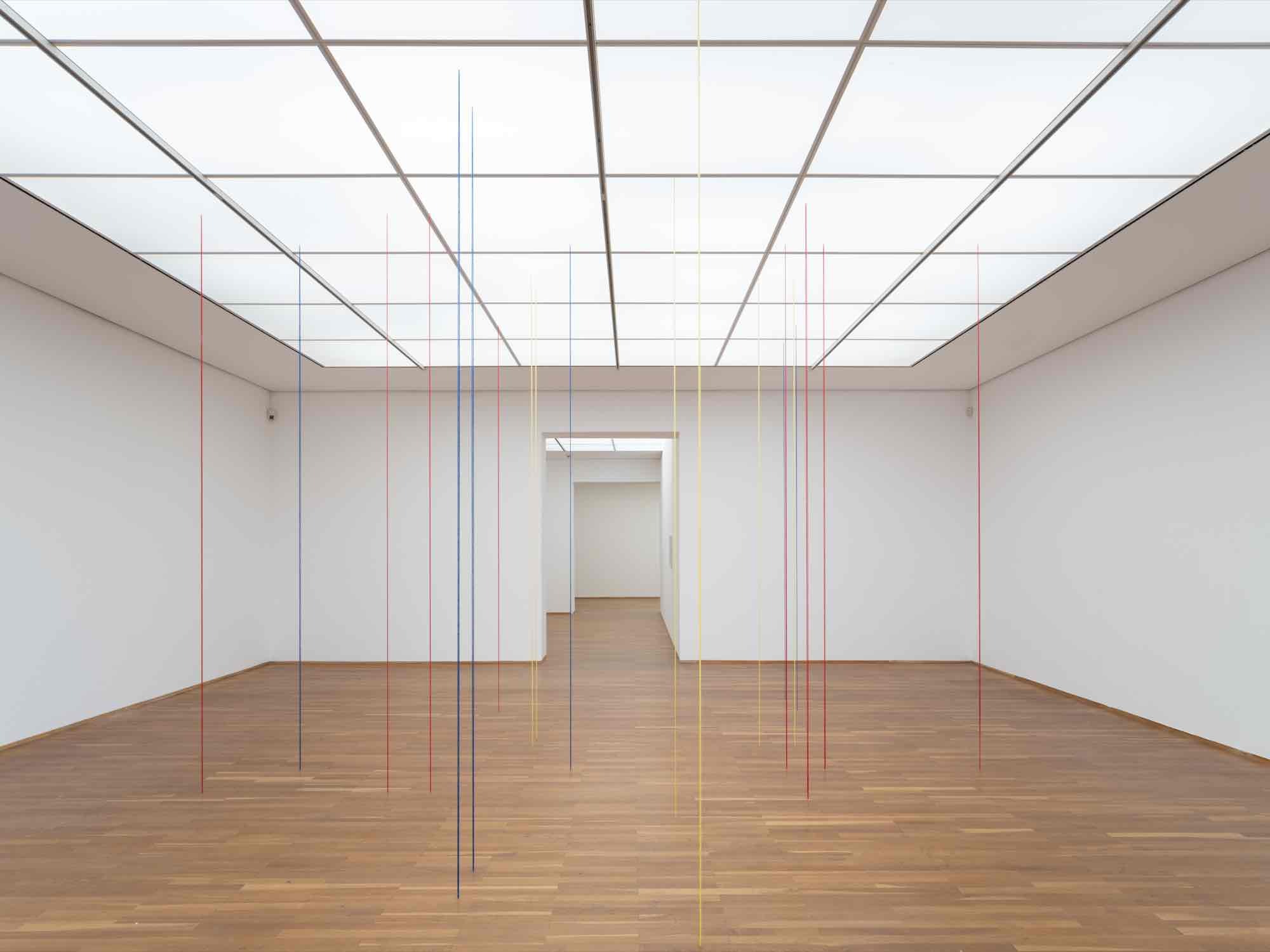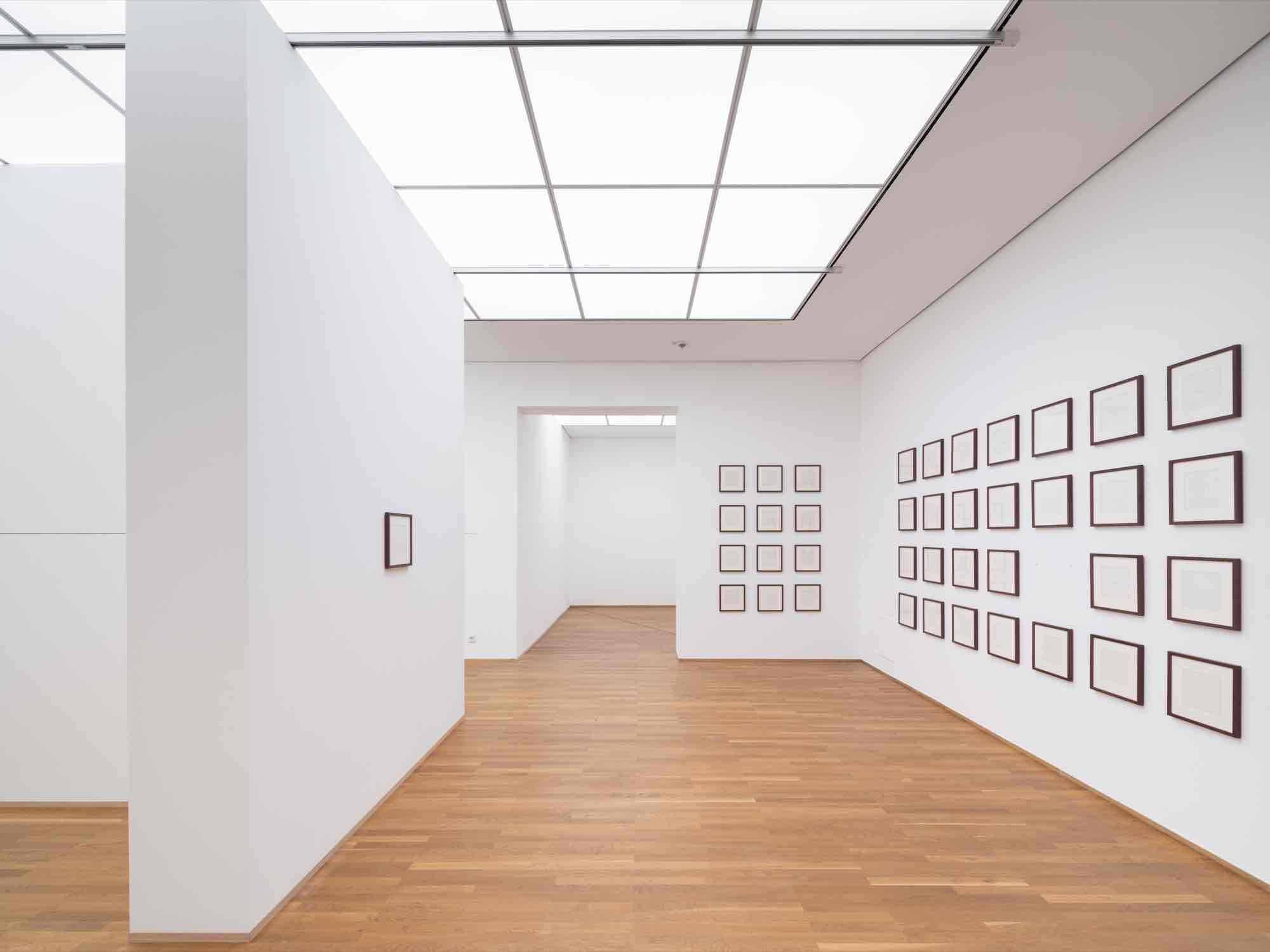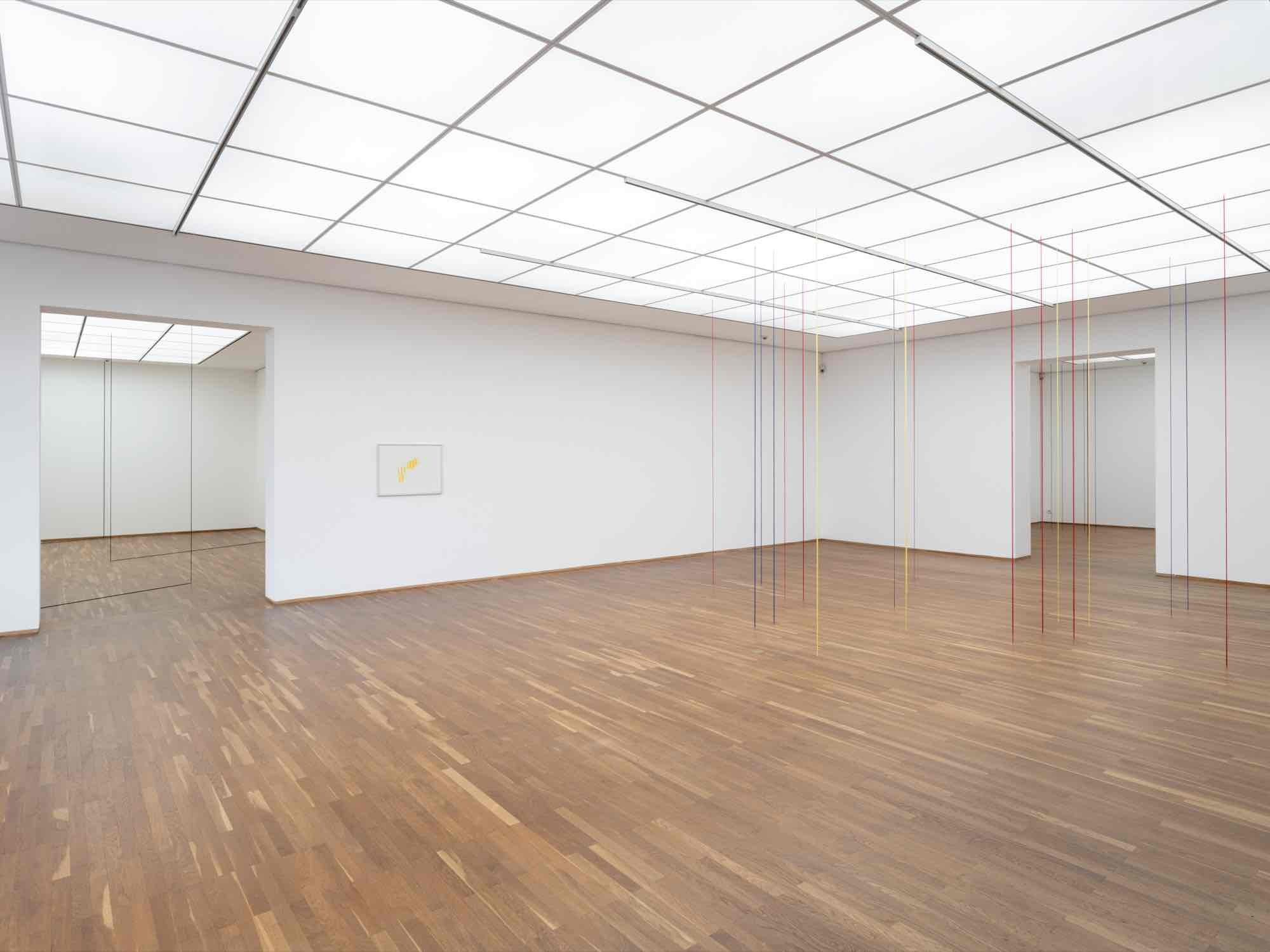Fred Sandback
Simple Facts
31 Mar - 17 Sep 2023

Exhibition view, Fred Sandback. Simple Facts, Hamburger Bahnhof – National Gallery of the Present © Fred Sandback Estate © National Gallery, National Museums in Berlin / Thomas Bruns

Exhibition view, Fred Sandback. Simple Facts, Hamburger Bahnhof – National Gallery of the Present © Fred Sandback Estate © National Gallery, National Museums in Berlin / Thomas Bruns

Exhibition view, Fred Sandback. Simple Facts, Hamburger Bahnhof – National Gallery of the Present © Fred Sandback Estate © National Gallery, National Museums in Berlin / Thomas Bruns

Exhibition view, Fred Sandback. Simple Facts, Hamburger Bahnhof – National Gallery of the Present © Fred Sandback Estate © National Gallery, National Museums in Berlin / Thomas Bruns

Exhibition view, Fred Sandback. Simple Facts, Hamburger Bahnhof – National Gallery of the Present © Fred Sandback Estate © National Gallery, National Museums in Berlin / Thomas Bruns

Exhibition view, Fred Sandback. Simple Facts, Hamburger Bahnhof – National Gallery of the Present © Fred Sandback Estate © National Gallery, National Museums in Berlin / Thomas Bruns

Exhibition view, Fred Sandback. Simple Facts, Hamburger Bahnhof – National Gallery of the Present © Fred Sandback Estate © National Gallery, National Museums in Berlin / Thomas Bruns

Exhibition view, Fred Sandback. Simple Facts, Hamburger Bahnhof – National Gallery of the Present © Fred Sandback Estate © National Gallery, National Museums in Berlin / Thomas Bruns
With “Fred Sandback. Simple Facts", Hamburger Bahnhof celebrates a significant donation from the Fred Sandback Archive: 64 variations of a three-part sculpture that was conceived in 1975 for Kunstraum München. They will be shown alongside nine other installations by the important Minimalist spanning more than three centuries. From installation to conceptual art, from Minimal Art to site-specific sculpture: the American artist Fred Sandback (1943–2003) devoted himself early on to various art forms that are still relevant today. 20 years after his death, the solo exhibition invites visitors to discover one of the most influential artists of the 20th century. Although his works have been shown internationally – especially in German-speaking countries – since 1968, this is his first solo museum presentation in Berlin.
By stretching single strands of yarn point-to-point to create geometric figures, Sandback has articulated a new form of “drawing in space”. He outlines surfaces and volumes in space using only thin steel rod, elastic cord, and acrylic yarn. The installations include the empty spaces in between, dissolving the boundaries of the artwork by turning its environment into a constituting part. Moving through the spaces, visitors often only recognize at second glance that there are no walls between the taut cords. This leads to a shift in perception of the visible objects and invisible space.
The title of the exhibition goes back to a quote by the artist from a 1977 catalog: “I’m interested in working in that area in which the mind can no longer hold on to things. The point at which all ideas fall apart… My lines aren’t distillations or refinements of anything. They are simple facts, issues of my activity that don’t represent anything beyond themselves.” With precision and an unprecedented economy of means, Sandback created iconic sculptures. Alongside his contemporaries Dan Flavin, Donald Judd, Sol LeWitt, and Carl Andre, he is one of the most important representatives of Minimal Art.
The installations shown in the exhibition illustrate Sandback’s different approaches to space. They include wall works and sculptures stretched between ceiling and floor in the middle of the room. The focus of the exhibition is the donated series of works “Untitled (Sixty-four Three-part Pieces)” (1975) of which a different iteration will be shown every week. The work is a central expression of Sandback’s interest in seriality. Each of the 64 sculptures consists of three strands of rust-brown acrylic yarn stretched across three adjacent rooms. The yarn can be installed in two different diagonals either at the level height of 150 cm or running directly across the floor. In 1975, Sandback visualized the 64 possible combinations of these three lines in his drawings "Sixty-four Three-part Pieces for the Munich Kunstraum". The drawings will be exchanged over the course of the exhibition to show the current variation of "Untitled (Sixty-four Three-part Pieces)" presented.
Fred Sandback was born in Bronxville, New York in 1943 and died in New York City in 2003. In his youth, he lived in Germany for two years. In 1969, Sandback graduated with an MFA from the Yale School of Art and Architecture. Sandback found support in Germany from his early years and was presented in museums in Munich, Essen or Krefeld, while the US art world was still hesitant to exhibit what would later come to be known as Minimal Art. Since the late 1960s, his work has been featured in numerous exhibitions in the United States and Europe and included in major public collections such as the Centre Georges Pompidou in Paris, the Museum für Moderne Kunst in Frankfurt, the Museum of Modern Art in New York, the Pinakothek der Moderne in Munich, or the Solomon R. Guggenheim Museum in New York.
Curated by Sam Bardaouil and Till Fellrath, directors of Hamburger Bahnhof – Nationalgalerie der Gegenwart.
By stretching single strands of yarn point-to-point to create geometric figures, Sandback has articulated a new form of “drawing in space”. He outlines surfaces and volumes in space using only thin steel rod, elastic cord, and acrylic yarn. The installations include the empty spaces in between, dissolving the boundaries of the artwork by turning its environment into a constituting part. Moving through the spaces, visitors often only recognize at second glance that there are no walls between the taut cords. This leads to a shift in perception of the visible objects and invisible space.
The title of the exhibition goes back to a quote by the artist from a 1977 catalog: “I’m interested in working in that area in which the mind can no longer hold on to things. The point at which all ideas fall apart… My lines aren’t distillations or refinements of anything. They are simple facts, issues of my activity that don’t represent anything beyond themselves.” With precision and an unprecedented economy of means, Sandback created iconic sculptures. Alongside his contemporaries Dan Flavin, Donald Judd, Sol LeWitt, and Carl Andre, he is one of the most important representatives of Minimal Art.
The installations shown in the exhibition illustrate Sandback’s different approaches to space. They include wall works and sculptures stretched between ceiling and floor in the middle of the room. The focus of the exhibition is the donated series of works “Untitled (Sixty-four Three-part Pieces)” (1975) of which a different iteration will be shown every week. The work is a central expression of Sandback’s interest in seriality. Each of the 64 sculptures consists of three strands of rust-brown acrylic yarn stretched across three adjacent rooms. The yarn can be installed in two different diagonals either at the level height of 150 cm or running directly across the floor. In 1975, Sandback visualized the 64 possible combinations of these three lines in his drawings "Sixty-four Three-part Pieces for the Munich Kunstraum". The drawings will be exchanged over the course of the exhibition to show the current variation of "Untitled (Sixty-four Three-part Pieces)" presented.
Fred Sandback was born in Bronxville, New York in 1943 and died in New York City in 2003. In his youth, he lived in Germany for two years. In 1969, Sandback graduated with an MFA from the Yale School of Art and Architecture. Sandback found support in Germany from his early years and was presented in museums in Munich, Essen or Krefeld, while the US art world was still hesitant to exhibit what would later come to be known as Minimal Art. Since the late 1960s, his work has been featured in numerous exhibitions in the United States and Europe and included in major public collections such as the Centre Georges Pompidou in Paris, the Museum für Moderne Kunst in Frankfurt, the Museum of Modern Art in New York, the Pinakothek der Moderne in Munich, or the Solomon R. Guggenheim Museum in New York.
Curated by Sam Bardaouil and Till Fellrath, directors of Hamburger Bahnhof – Nationalgalerie der Gegenwart.
